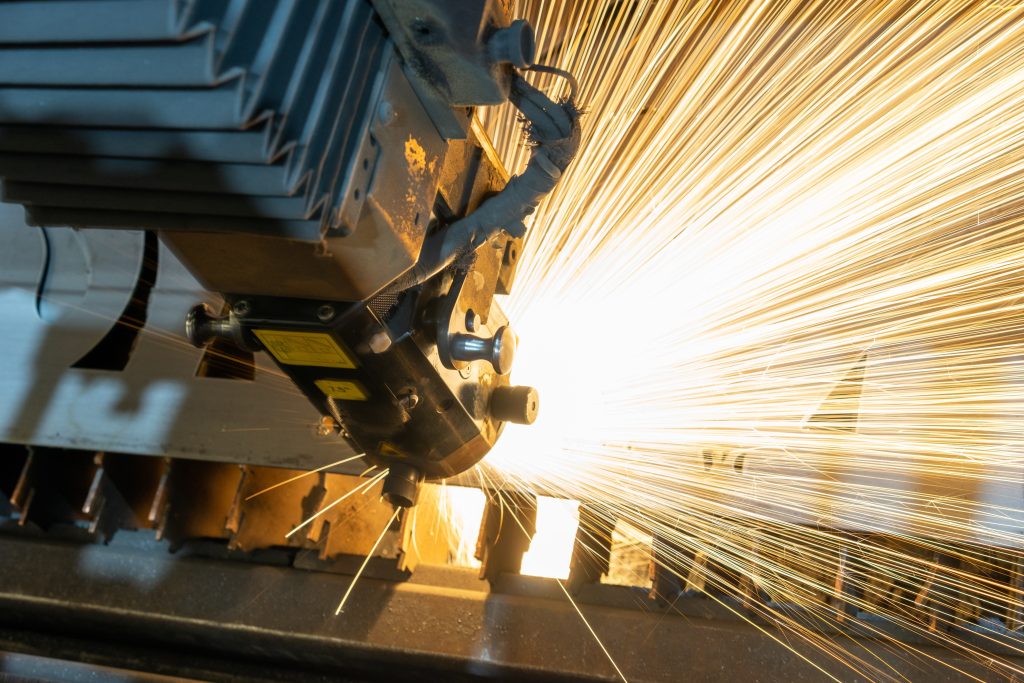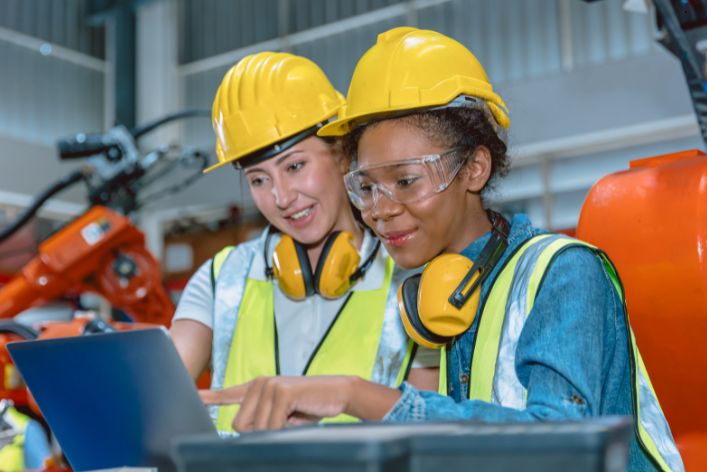The manufacturing sector has been completely transformed by automation.
Even in the years before the epidemic, many individuals were concerned about how automation will affect jobs in the future.
There is legitimate concern about how the composition of the future workforce will change as the usage of robotics in the manufacturing sector sharply increases.
Due to rising automation, factories that once required hundreds or even thousands of workers now only need a fraction of that number.
Automation has brought about numerous positive changes, improving efficiency, productivity, and safety in the workplace, among other things.
However, it has also led to job loss and decreased job security, which has created concern among workers and policymakers alike.
This blog post aims to explore both the positive and negative impacts of automation on the workforce.
We will also discuss the steps that can be taken to address the challenges posed by these changes.
Positive Impacts of Automation on the Workforce
Increased efficiency and productivity
One of the most significant benefits of automation is the increase in efficiency and productivity.
Automated systems can perform tasks faster and with greater accuracy than humans.
This frees human workers up with time and resources that can be devoted to more complex and creative tasks.
This has led to improved outcomes in various industries, including manufacturing, finance, and healthcare, to name a few.
Improved quality of products and services
Automation has enabled companies to produce higher-quality products and services.
This is because companies can programme machines and algorithms to follow specific quality standards and protocols.
This has led to increased customer satisfaction and improved brand reputation.
Enhanced safety in the workplace
Automation has improved safety in the workplace by reducing the need for workers to perform dangerous and physically demanding tasks.
For example, robots and automated systems are often used in hazardous industries, such as construction and mining, to minimize the risk of injury to workers.
Reduction of manual labor and monotonous tasks
Automation has reduced the need for manual labor and repetitive tasks, enabling workers to focus on more challenging and meaningful tasks.
This has improved job satisfaction and reduced stress levels among employees.
Better decision-making through data analysis and machine learning
Automated systems, such as machine learning algorithms, can analyze vast amounts of data and provide insights that would be difficult or impossible for humans to uncover.
This has improved decision-making in various industries, including finance, marketing, and healthcare.
Increased accessibility to goods and services
Automation has increased the accessibility of goods and services.
Companies can produce and distribute products and services more efficiently and at a lower cost.
This has improved the quality of life for consumers and enabled them to access a wider range of products and services.
Creation of new jobs and industries
Automation has created new job opportunities and industries, such as software engineering, data analysis, and robotics.
This has encouraged innovation and creativity and provided new avenues for workers to pursue.
Increased flexibility in the workplace
Automation technology enables factories to run continuously without adding staff or requiring current workers to put in extra hours.
The typical workweek in the 1900s was around 70 hours.
Currently, it only takes around 40 hours.
These are primary causes of this reduction.
Employees can benefit from a better work-life balance as a result, even if industrial production rises.
Read: The Underrated Skill Introverts Need To Be Successful In the Workplace

Negative Impacts of Automation on the Workforce
Job loss and unemployment
One of the most significant negative impacts of automation is job loss.
Automation has made many jobs obsolete, particularly in industries such as manufacturing, transportation, and customer service.
We Design & Develop Websites, Android & iOS Apps
Looking to transform your digital presence? We specialize in creating stunning websites and powerful mobile apps for Android and iOS. Let us bring your vision to life with innovative, tailored solutions!
Get Started TodayMachines and algorithms have automated many jobs once performed by humans.
This leads to job loss and unemployment.
Worsening income inequality
Another negative impact of automation is worsening income inequality.
Automation benefits those with high levels of education and skills.
It exacerbates the income gap between skilled and unskilled workers.
This has led to increasing poverty and social inequality, as many workers are struggling to find work and support themselves and their families.
Decreased job security
The rise of automation has also led to decreased job security, as machines and algorithms are replacing human workers in many industries.
This has led to increased uncertainty for workers, who are facing the threat of losing their jobs to automation.
In many cases, workers who machines and algorithms have replaced are finding it challenging to find new employment, as the skills they once possessed are becoming obsolete.
Loss of Flexibility
There is no disputing that modern automation technology can be precisely adjusted to meet certain company demands.
Unfortunately, it does so at the expense of some human interaction.
For instance, a customer care chatbot will struggle more than a human person to understand a customer’s unique demands, which may irritate them.
Similar to this, tailored methods for particular jobs or processes could still need physical labor.
Read: The Impact of Technology on the Healthcare Industry
Addressing the Negative Impact of Automation
Government intervention
To address the challenges posed by automation, governments can provide retraining programs and unemployment benefits for workers who lose their jobs due to automation.
These programs can help workers acquire new skills and transition to new jobs in industries that are not at risk of automation.
Collaboration between employers and workers to upskill and reskill
Employers and workers can also collaborate to upskill and reskill workers, enabling them to adapt to the changes brought about by automation.
This can be done through in-house training programs, apprenticeships, and other initiatives that provide workers with the skills and knowledge they need to succeed in the new economy.
Investment in technology that complements, rather than replaces, human labor
This can also help address the challenges posed by automation.
For example, companies can invest in technology that enhances human capabilities, such as augmented reality and virtual reality, rather than technology that replaces human workers.
Encouragement of entrepreneurship and self-employment
Finally, policymakers can encourage entrepreneurship and self-employment, enabling workers to create their own jobs and secure their future.
This can be done through initiatives that provide funding, training, and support for new entrepreneurs and small business owners.
Read: Maximize Your Work-From-Home Productivity with These Top 7 Must-Have Tools

Who is at Risk of Losing Their Job to Automation?
The risk of job automation is greatest for those with less education who do routine activities, such as file clerks or cashiers.
Automation, though, is going to have a significant impact.
Between 9% and 47% of employment, according to researchers, could be mechanized in the future.
Federal agencies are striving to compile more information on how automation will impact the workforce to better comprehend the extent of its consequences.
For instance, the Department of Labor intends to compile data from sectors including healthcare, transportation, and warehousing to better understand how automation is harming jobs.
Read: The Impact of Effective Leadership Teams In Workforce Management
Conclusion
It is doubtful that the trend toward automated workplaces will reverse very soon.
The global market for automation technology is growing at a compound annual growth rate of 40.6% per year, according to a 2020 Deloitte analysis.
And more than two-thirds of businesses adopted automation to meet the problems posed by the COVID-19 pandemic.
Automation is no longer an issue of if for businesses; rather, it is a matter of how to deploy it and get their staff ready for the future workplace.
Before you go…
Hey, thank you for reading this blog to the end. I hope it was helpful. Let me tell you a little bit about Nicholas Idoko Technologies.
We help businesses and companies build an online presence by developing web, mobile, desktop, and blockchain applications.
We Design & Develop Websites, Android & iOS Apps
Looking to transform your digital presence? We specialize in creating stunning websites and powerful mobile apps for Android and iOS. Let us bring your vision to life with innovative, tailored solutions!
Get Started TodayWe also help aspiring software developers and programmers learn the skills they need to have a successful career.
Take your first step to becoming a programming boss by joining our Learn To Code academy today!
Be sure to contact us if you need more information or have any questions! We are readily available.
Put Your Tech Company on the Map!
Get featured on Nicholas Idoko’s Blog for just $200. Showcase your business, boost credibility, and reach a growing audience eager for tech solutions.
Publish Now









